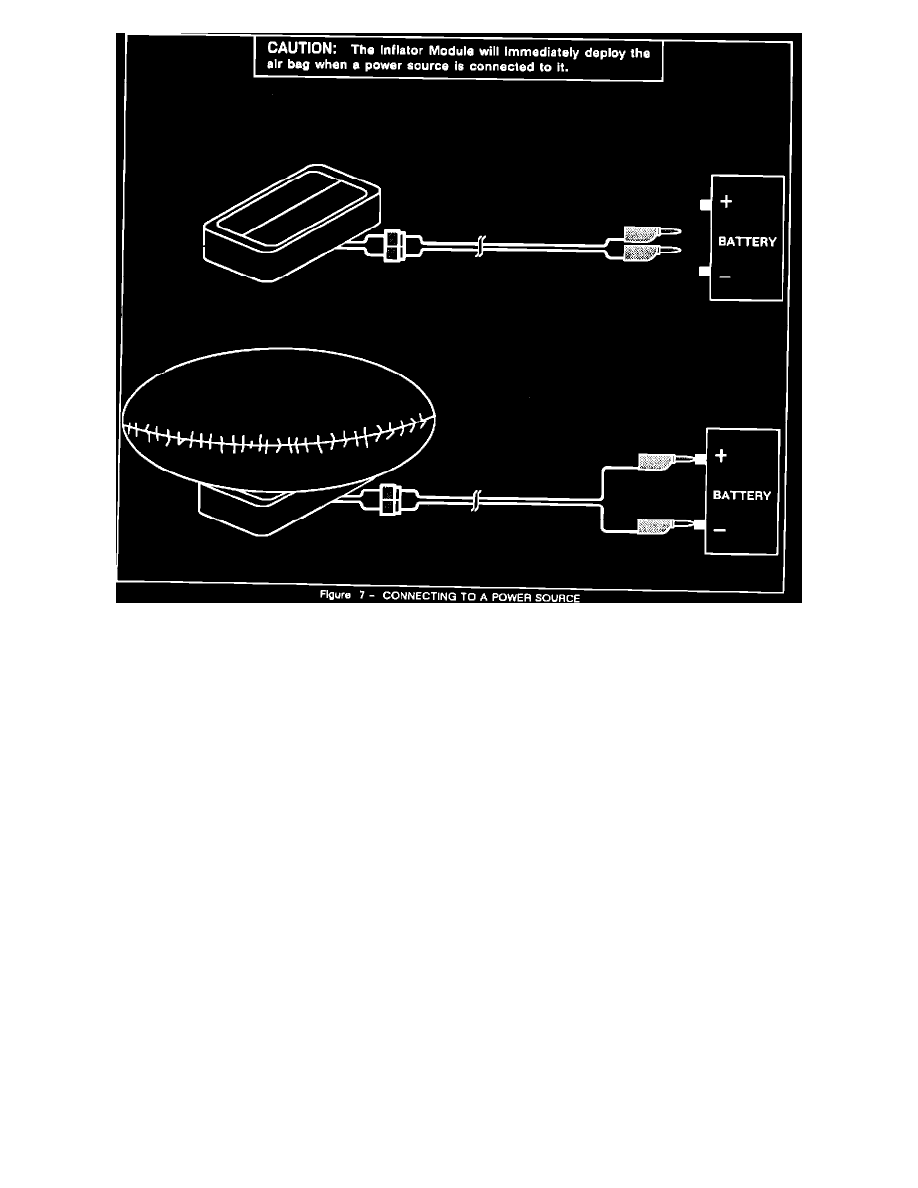Camaro RS V8-305 5.0L VIN E TBI (1990)

Figure 7
18.
Connect the universal deployment harness wires to the power source to immediately deploy the inflator module. Refer to Figure 7.
19.
Disconnect the universal deployment harness from the power source.
20.
Short the two universal deployment harness leads together by fully seating one banana plug into the other.
21.
In the unlikely event that the inflator module did not deploy after following these procedures, proceed immediately with steps 26 through 30
below. If the inflator module did deploy, proceed with steps 22 through 25 below.
After the inflator module has been deployed, the surface of the air bag may contain a powdery residue. This powder consists primarily of corn starch
(used to lubricate the bag as it inflates) and byproducts of the chemical reaction. Sodium hydroxide dust (similar to lye soap) is produced as a byproduct
of the deployment reaction. The sodium hydroxide then quickly reacts with the atmospheric moisture and is converted to sodium carbonate and sodium
bicarbonate (baking soda). Therefore, it is unlikely that sodium hydroxide will be present after deployment. As a precaution, however, gloves and safety
glasses are recommended to prevent any possible irritation of the skin or eyes.
CAUTION: Safety precautions must be observed when handling a deployed inflator module. After deployment, the metal surfaces of the inflator
module will be very hot. Allow the inflator module to cool before handling any metal portion of it. Do not place the hot deployed inflator
module near any flammable objects. Failure to follow procedures may result in fire or personal injury.
